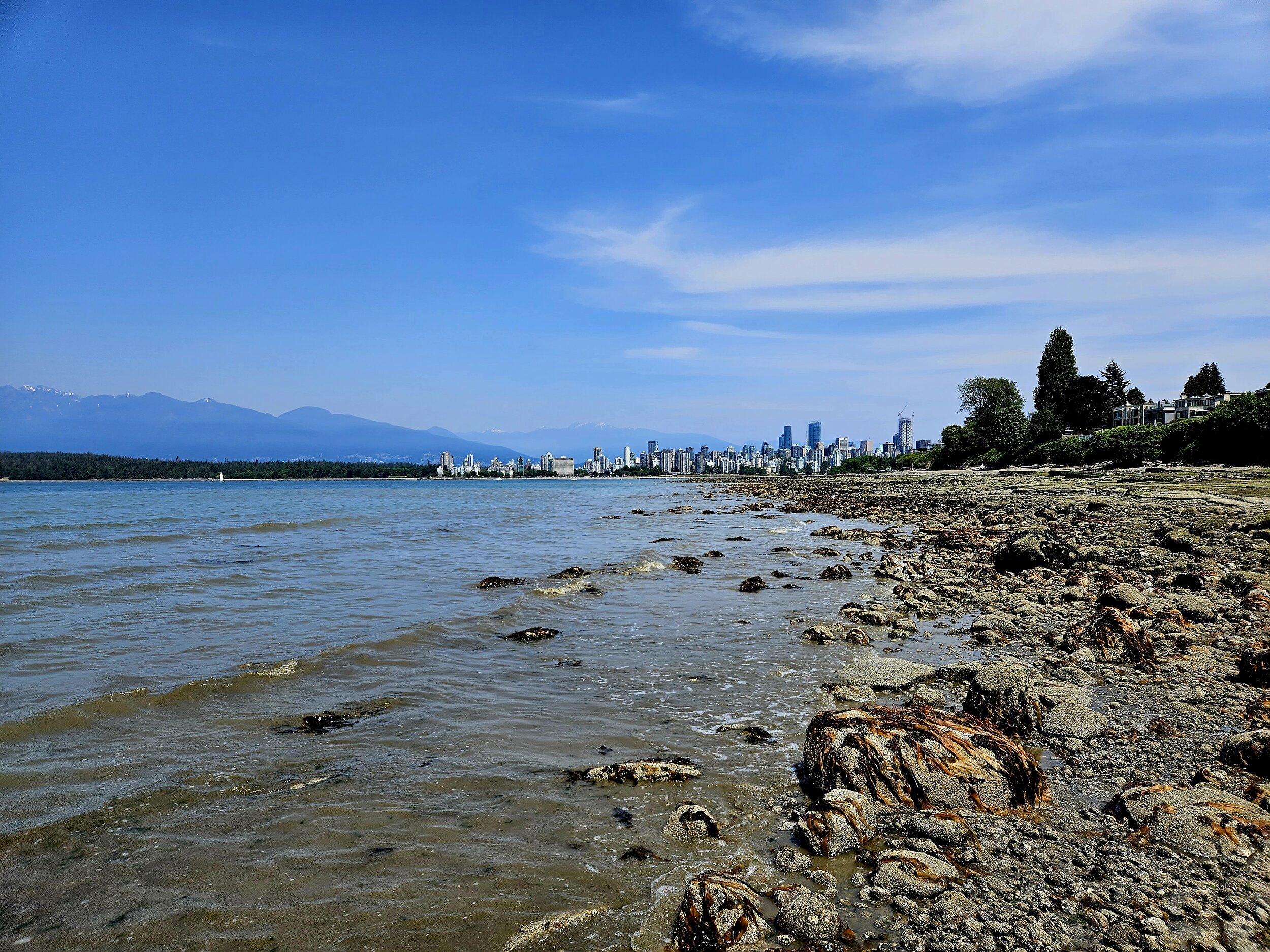
Water Quality Investigations
at Volunteer Park
Project Goals
The goals of this project are to monitor the microbiological water quality of the water at Volunteer Park throughout summer and into fall and winter 2024 and identify the source of heightened E. coli at the park.
Identification of the source of contamination will aid in the development of remediation plans at Volunteer Park so that the community may continue to safely recreate at this beach for years to come.
The Data
The graph shows the most probable number (MPN) of E. coli in 100mL of water (the y-axis) in 2023. Months are highlighted by colour, so that the reader may see the elevated E. coli in the summer months.
In Vancouver, it is not recommended to swim in waters with E. coli levels above 200 MPN. This recommendation is displayed on the graph by the red line. It is important to note that the majority of the water samples have much higher E. coli than the recommended levels for recreation.
Volunteer Park Upgrades
The above image shows Volunteer Park prior to the City of Vancouver’s stream daylighting and restoration project. The water once lacked accessibility, as the only beach access was a single set of steep stairs. The Tatlow stream is also covered up and diverted through a culvert.
Photo: Vancouver Parks Board
Future of Volunteer Park
The City of Vancouver’s Volunteer Park restoration project has “daylighted” the local underground stream, which has replaced a culvert with a natural stream. This will hopefully help with rainwater management, increase habitat for pollinators and local wildlife, and enhance biodiversity.
The new project includes a beach ramp that increases accessibility to the beach, with benches and a viewpoint that overlooks the lush landscape and the Salish Sea.
This project allows more people to enjoy the beach.
Partner Recognition
This project is being conducted in partnership with Dr. Jane Fowler’s laboratory at Simon Fraser University. Ronak Salamat Ravandi and Joyce Wong are conducting this amazing research. A big thanks to these students and their work in creating swimmable, drinkable, fishable waters for everyone!





